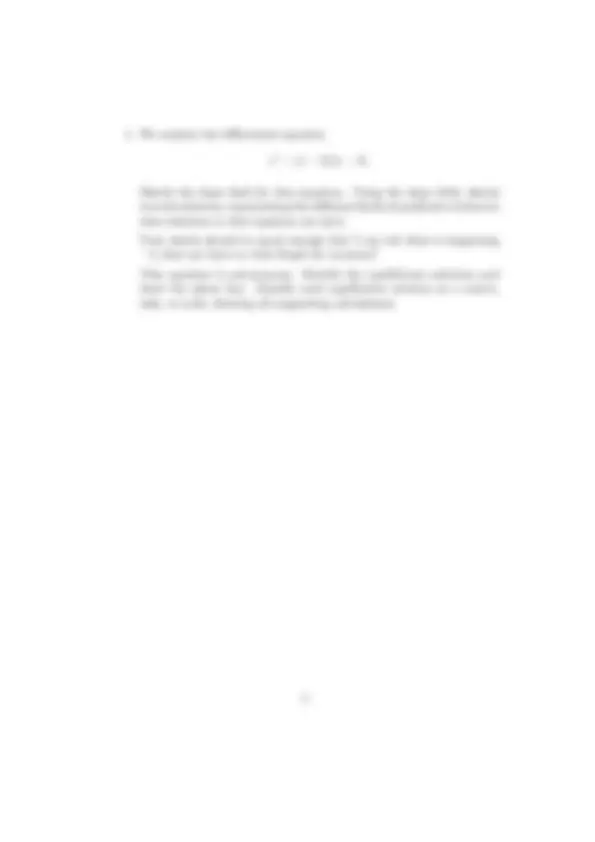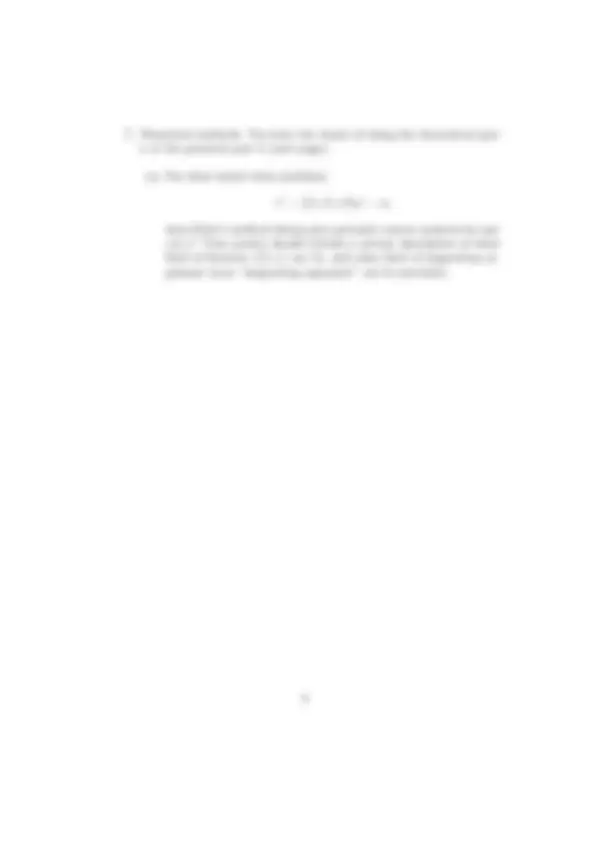








Study with the several resources on Docsity

Earn points by helping other students or get them with a premium plan


Prepare for your exams
Study with the several resources on Docsity

Earn points to download
Earn points by helping other students or get them with a premium plan
Community
Ask the community for help and clear up your study doubts
Discover the best universities in your country according to Docsity users
Free resources
Download our free guides on studying techniques, anxiety management strategies, and thesis advice from Docsity tutors
Instructions and problems for a math 333 university exam. It includes various types of differential equations and initial value problems, requiring students to classify orders, linearity, and check given solutions. Additionally, students are asked to sketch slope fields, analyze equilibrium solutions, and solve separable and linear inhomogeneous equations. Some problems involve change of variables and numerical methods.
Typology: Exams
1 / 10

This page cannot be seen from the preview
Don't miss anything!







This exam will start at 7:40 am and end at 8:35 am. No access to books, notes or neighbors is permitted. You are permitted to use a scientific calculator with no symbolic or graphing capabilities (this was announced in class).
(a) x′^ = sec(t)x
(b) x′′^ = (x′)^2 purported solution: x(t) = − ln(t + c)
(a) x′^ = 2x − t; x(0) = 1
(b) (extra credit) Solve the linear inhomogeneous equation
v′^ = tan(t)v + cos(t)
x′^ = (x − 2)(x − 4).
Sketch the slope field for this equation. Using the slope field, sketch several solutions, representing the different kinds of qualitative behavior that solutions to this equation can have. Your sketch should be good enough that I can tell what is happening
x′^ = x
1 (^3) + x 2 (^3) ; x(0) = 0
Tell whether existence of a solution follows from theorems we have studied (this is very different from asking whether you can solve the equation!). If you conclude that there is a solution, tell me whether the existence of just one solution (uniqueness) follows from the theorems we have studied. Explain why, stating clearly what relevant conditions in those theorems hold or do not hold in each case. Please note that you are not being asked to solve this equation.
(a) For what initial value problems
x′^ = f (x, t); x(t 0 ) = x 0
does Euler’s method always give precisely correct answers for any x(t 1 )? Your answer should include a precise description of what kind of function f (t, x) can be, and some kind of supporting ar- gument (your “supporting argument” can be pictorial).